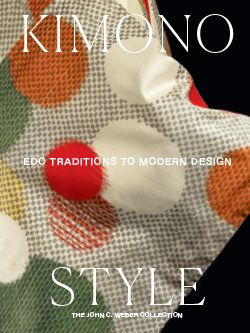Summer Robe (Hito-e) with Cormorant-Fishing Scene
Not on view
Unlined summer robes made from fine crepe silk were worn as the weather turned warm and humid, beginning in May. Here cormorants swim and fly among reeds and drying fishing nets; a boat with a fisherman’s straw raincoat and hat is also depicted. Meticulous goshodoki, or courtly style decoration, typically combined seasonal elements such as the robe’s scattered wild ginger leaves and cherry blossoms and its water scene with literary motifs recognizable to a well-educated upper-class woman. The fishing boat scene is itself a reference to the Noh play The Cormorant Fisher (Ukai). Crests of wild ginger leaves across the shoulders indicate that the owner was a princess from the Tokugawa shogun family. While the robe’s careful composition and delicate embroidery reflect the expensive tastes of a high-ranking samurai woman, simple stencil-dyed dots stand in for labor-intensive “fawn spot” tie-dye (kanoko shibori), a technique outlawed at the time for signifying personal extravagance.
Due to rights restrictions, this image cannot be enlarged, viewed at full screen, or downloaded.



